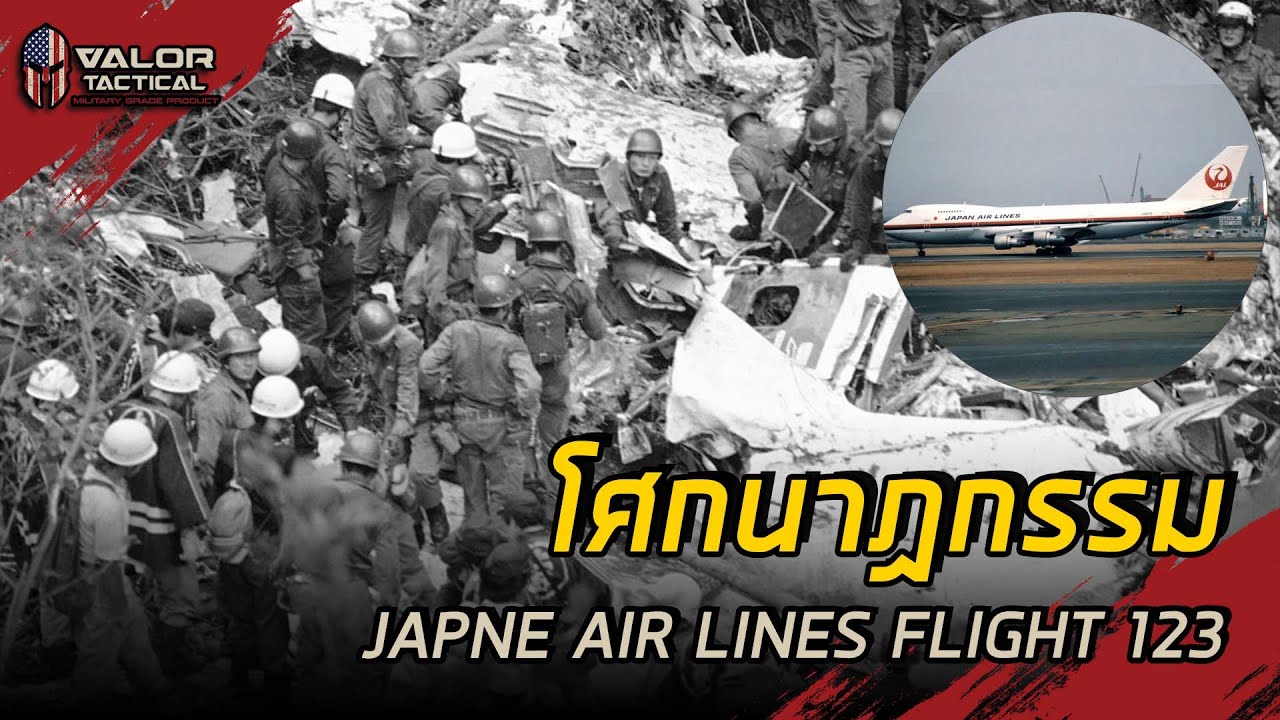JAPAN AIRLINE Flight 123 is considered one of the worst aviation disasters in aviation history. So why do we use the word “arrogance”?
With the Japanese government, today Valor Tactical will take viewers to see together. But first, we must go back and look at this flight.
The Japan Airlines Flight 123 tragedy occurred on August 12, 1985, when a Japan Airlines Boeing 747 SR-46
Taking off from Haneda Airport in Tokyo, bound for Itami Airport in Osaka Prefecture, the Boeing 747 took off from
Shortly after takeoff from Haneda Airport, a 747's tail pressurization bulkhead exploded, causing the blast to tear off the 747's entire tail rotor.
The loss of the vertical tail rotor caused the aircraft to lose control, and despite the pilots' efforts to maneuver the aircraft back to Haneda Airport for more than 30 minutes.
But the plane eventually crash-landed in the Takamagahara area, about 100 kilometers from Tokyo.
While the pilot was maneuvering the aircraft, a U.S. Air Force soldier at the U.S. Air Force Yokota Air Base air traffic control center
Not far from Tokyo, a conversation between JAL 123 and Tokyo air traffic control was detected. US air traffic control attempted
Contact for assistance Although JAL 123 did not respond to the call, the Yokota Air Base Air Traffic Control Center
We have been trying to track the location of JAL 123 at all times, including preparing the airport ground and rescue units in case JAL 123 needs to make an emergency landing.
At Yokota Air Base
Ultimately, efforts from both Tokyo Air Traffic Control and Yokota Air Base Air Traffic Control were in vain.
Japan Airlines Flight 123 crashed near Takamagahara Mountains in Gunma Prefecture on August 12 at 6:56 p.m. with 524 passengers and crew on board.
The Japanese authorities, including the Self-Defense Forces, the Japanese Police and Fire Departments, took more than 13 hours.
Now that we're on our way to the crash site of JAL 123, it's time to talk about how the JAL 123 incident reflected the arrogance of the Japanese government.
After JAL 123 lost contact, Yokota Air Base air traffic control directed the C-130 transport aircraft to
A U.S. Air Force C-130 aircraft flying in the area was dispatched to investigate the crash site, which took about 20 minutes.
In order for the C-130 aircraft to be able to pinpoint the location of the crash site, the C-130 aircraft also flew over the crash site.
To collect various data from the crash site and forward it to Yokota Air Base and the Japanese government, which at that time caused great shock to the Japanese government.
The first information about the plane crash came from the US side.
Yokota Air Base later contacted Camp Zama, a U.S. Army camp in Kanagawa Prefecture, not far from Tokyo and the crash site.
Yokota Air Base coordinated to send helicopters and personnel to the crash site.
To inspect, collect data on the crash site and search for survivors.
But the unexpected happened when the US Army helicopters near the JAL 123 crash site received orders from Yokota Air Base to stop all aircraft.
C-130s and UH-1 helicopters near the JAL 123 crash site were ordered to return to base immediately, much to the surprise of the pilots in the area.
So surprised was it that the co-pilot of the first C-130 to reach the crash site, Michael Antonucci, reiterated back to Yokota Air Base that
The helicopter was at the crash site and ready for the soldiers to rappel down to the crash site, but the response he got was for all US aircraft to return to base immediately.
Because the Japanese side will be the main organizer of the rescue.
Shortly afterwards, a V-107 helicopter from the Japanese Air Self-Defense Force also flew into the area of the JAL 123 crash site.
But at that time it was already night time.
And the helicopter does not have equipment for flying at night, plus the V-107 is a large helicopter, making it difficult to send rescue workers to the crash site.
In a mountainous area, all the pilots saw was the flames from the wreckage of the plane, leading the pilots to believe that no one could have survived.
This report from the pilot prompted a rescue team consisting of the Self-Defense Forces, the Japanese Police and Fire Departments to
It was decided not to go on foot at night but to go in on the morning of the 13th instead, believing that no one would survive the plane crash.
The rescue team reached the crash site on foot at around 9am. The unexpected happened when the rescue team found four survivors.
According to Yumi Ochiai, one of the four survivors of the plane crash, she said that after the crash, she could actually hear the helicopter blades.
Including the screams and groans of other survivors, but those sounds gradually faded away that night.
Autopsies on several of the deceased have revealed that many of the deceased were not killed immediately by the plane crash, but rather by
The poison of the wound and the cold air at night, if they had been rescued in time, there might have been more than 4 survivors.
Or, perhaps impliedly, if US helicopters were able to successfully drop troops off at the crash site instead of being ordered back to base.
They may be able to save more than four passengers.
But what made Yokota Air Base order a helicopter just moments away from rescuing JAL 123 to return to base?
Ten years after the JAL 123 incident, TV Asahi reporter Kazuhisa Okawa
Said in a program about JAL 123 that aired in 1995:
After Japan Airlines Flight 123
There has been a debate within the government over whether to give the Prime Minister's Office police unit to the Ministry of Defence's Self-Defense Force.
He was the lead investigator in the rescue operation, but during the dispute, a US military helicopter was able to reach the crash site.
Japan Airlines Flight 123 in a short time, coupled with the need to start a rescue operation, which if done, both the police and the Self-Defense Forces
It would be a real embarrassment to refuse assistance from the United States.
TV Asahi also asked the former commander of the US military in Japan at the time of the incident.
Former US military commander says self-defense forces refused our help after plane crash that day
It could be said that this was arrogance, because if the Japanese government at that time had chosen to let the United States conduct the rescue operation instead,
If they refused to help out of fear of losing face, it's possible that more than four passengers on Japan Airlines Flight 123 would have died.
JAPAN AIRLINE Flight 123 and the arrogance of the Japanese government


